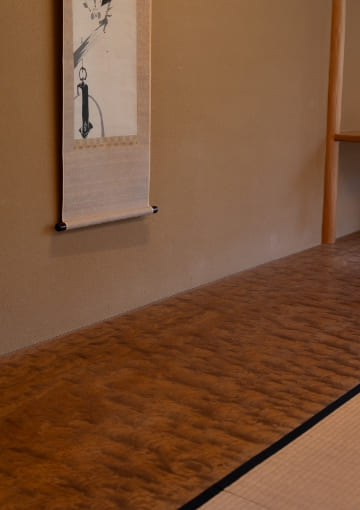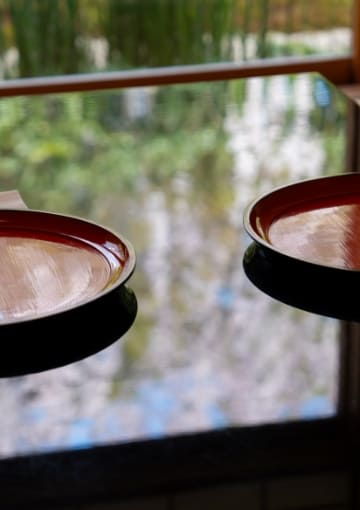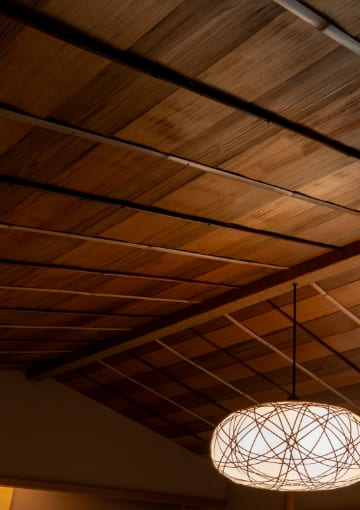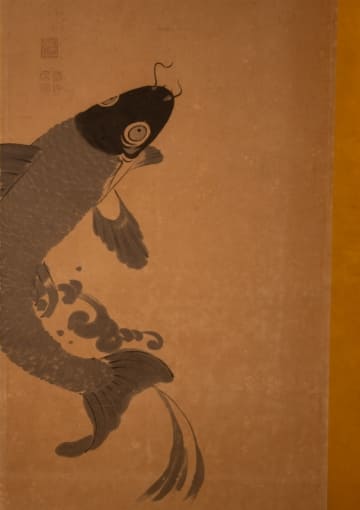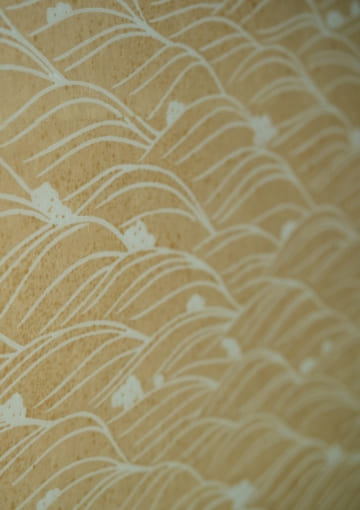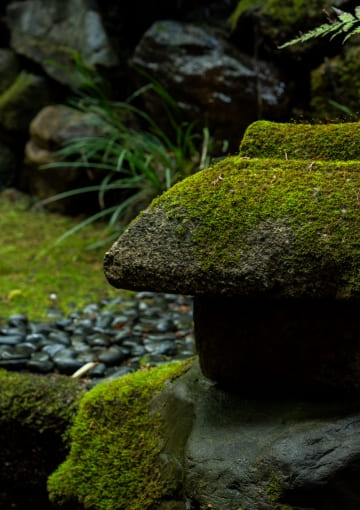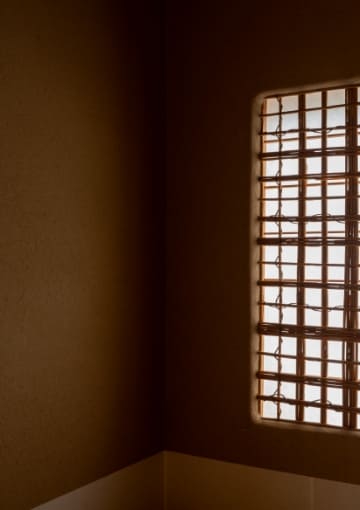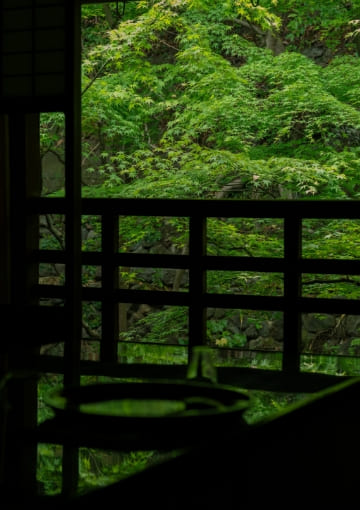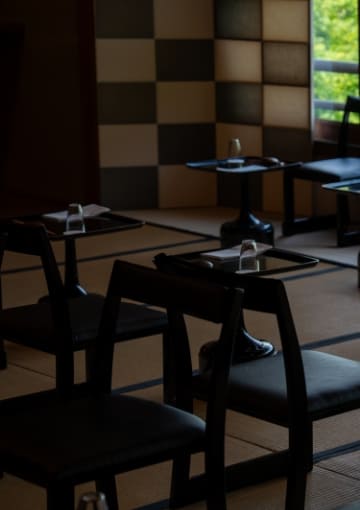蘭の間 RANNOMA 5
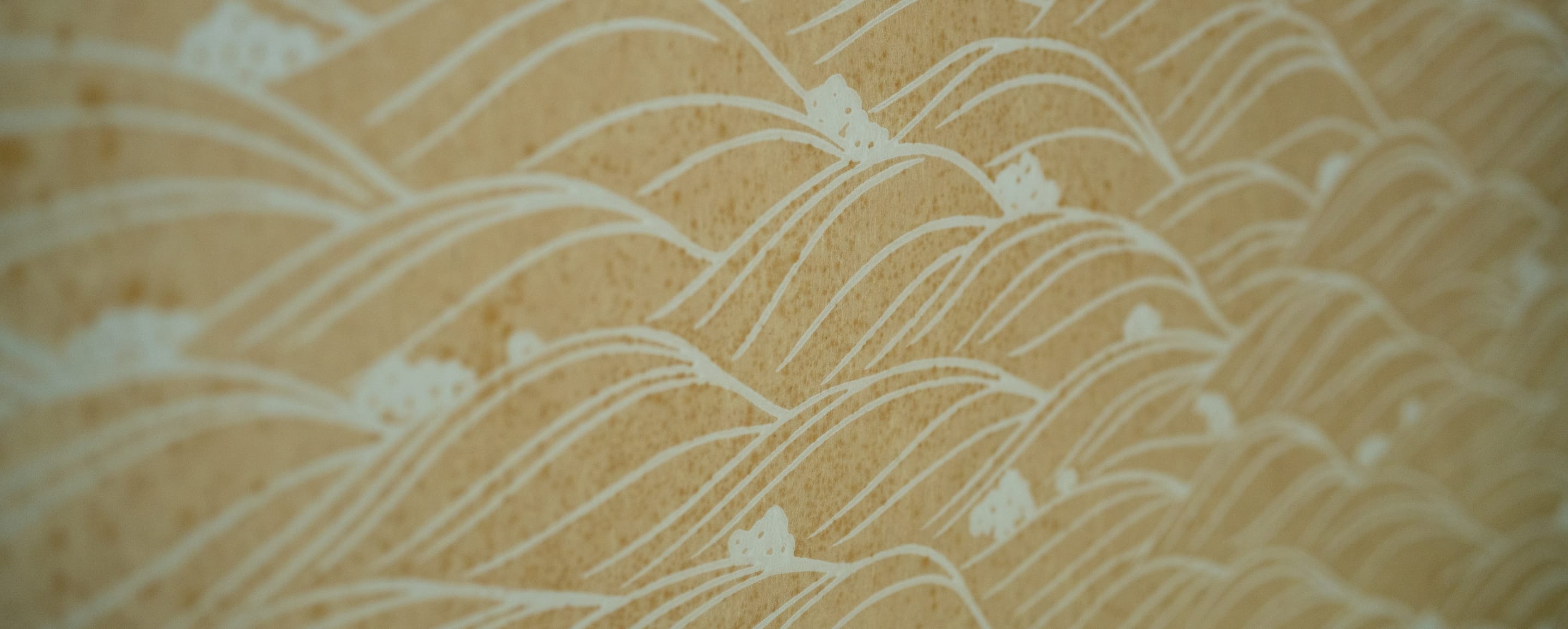
庭景色を切り取り、
一幅の絵のように。
夏は蒸し暑く、冬は底冷えが厳しい京都では、少しでも暑さ寒さをしのぐ知恵として、季節の変わり目に「建具替え」が行われてきました。建具、表具、指物、唐紙、簾…といった職人技も京都には欠かせません。雪見障子越しの庭が風情ある、蘭の間。夏には紙の障子が葦の障子へと替わり、涼やかな眺めに。建具は風や光の調節だけでなく、いわば額縁のような役割も担っています。
Capturing the garden hues in a single picture
The summers are hot and humid, and the winters are bitterly cold in Kyoto. Through the wisdom of experience, residents have adopted the act of tategu-gae (which translates as ‘replacing fixtures’) at the turn of the seasons to cope with the heat and cold. Kyoto has no lack of craftsmanship in fittings like doors and windows, mounted works, joinery, sliding doors, and bamboo screens; the list goes on. Ran-no-ma (literally the ‘orchid room’) features yukimi-shōji glass-bottomed panels, which are used for yukimi, or ‘snow viewing’, and otherwise for guests to enjoy a picturesque view of the garden in all seasons. In summer, the paper screens are replaced with the more suitably cooler reed screens, creating a refreshing ambience. In addition to regulating airflow and light, the room’s fittings also act as frames enhancing the beauty of the scene beheld.
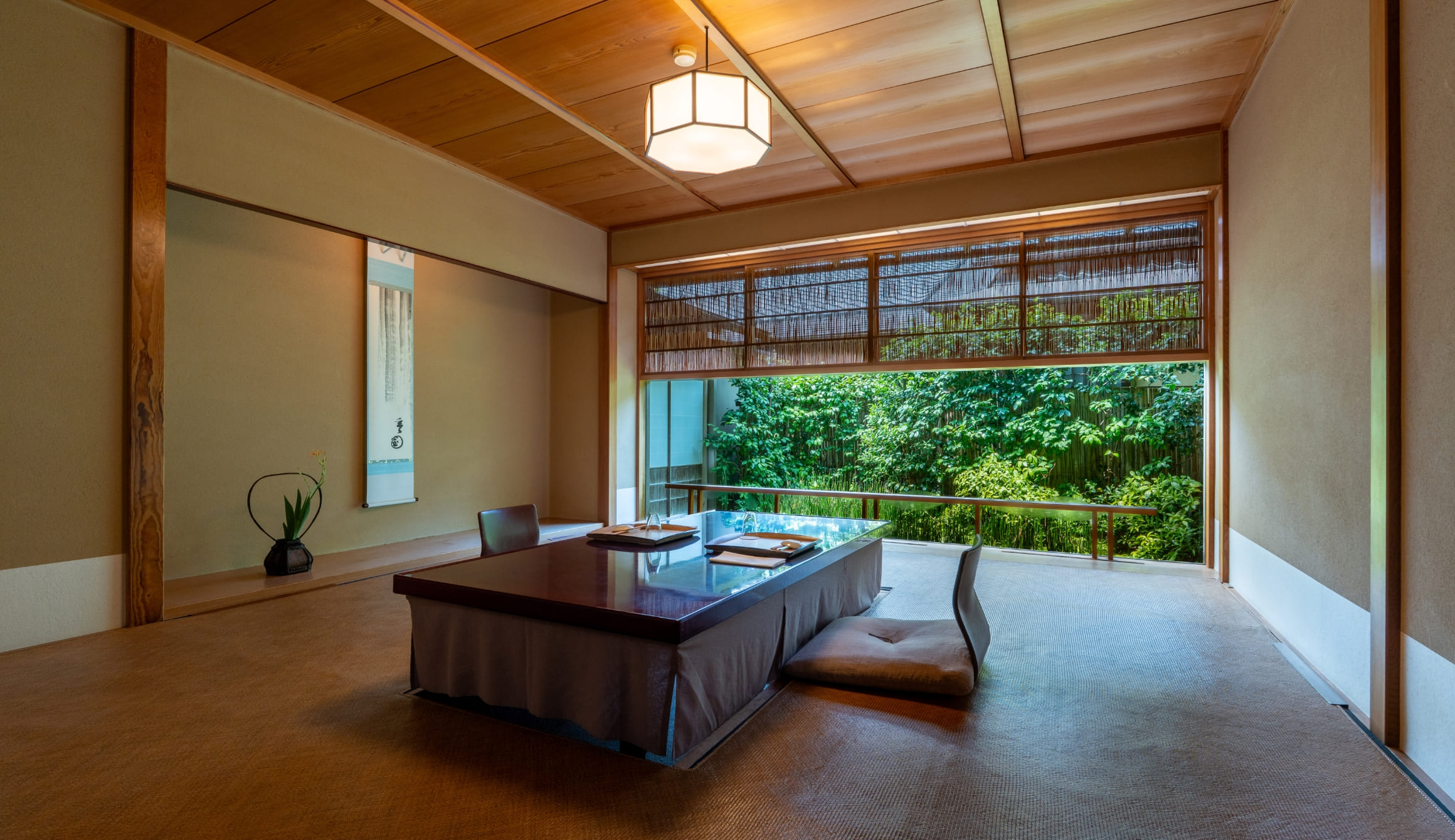
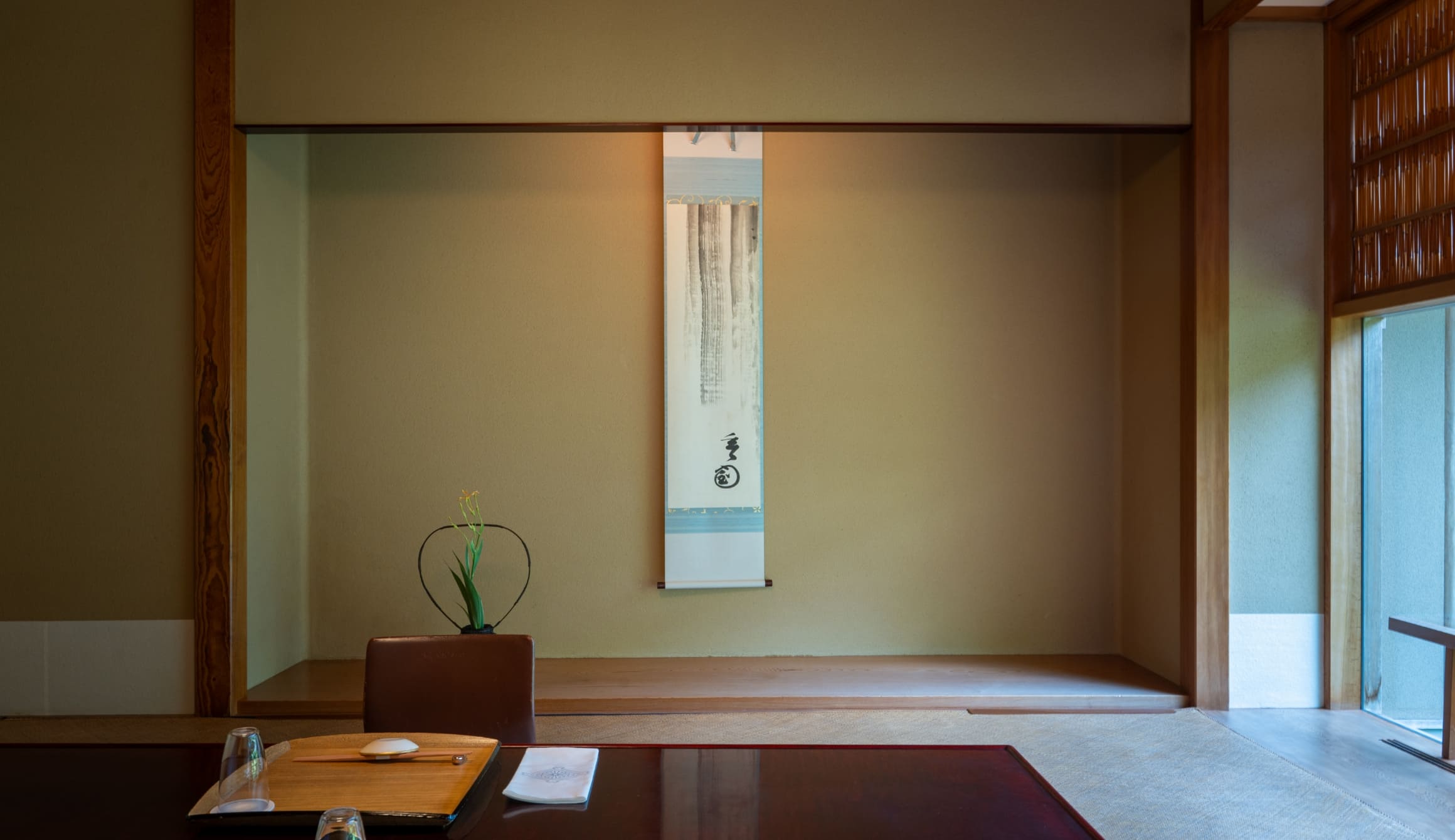
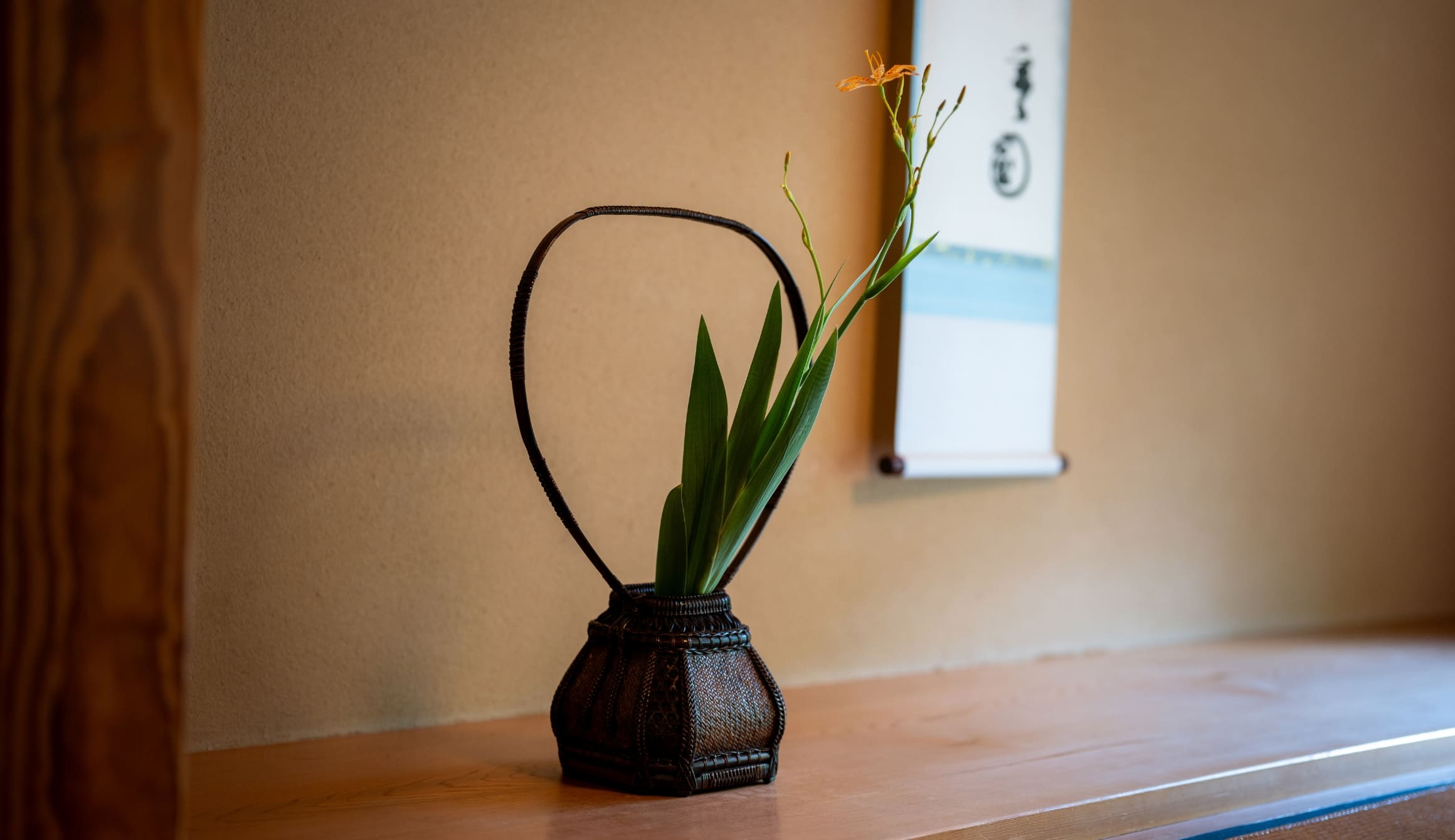
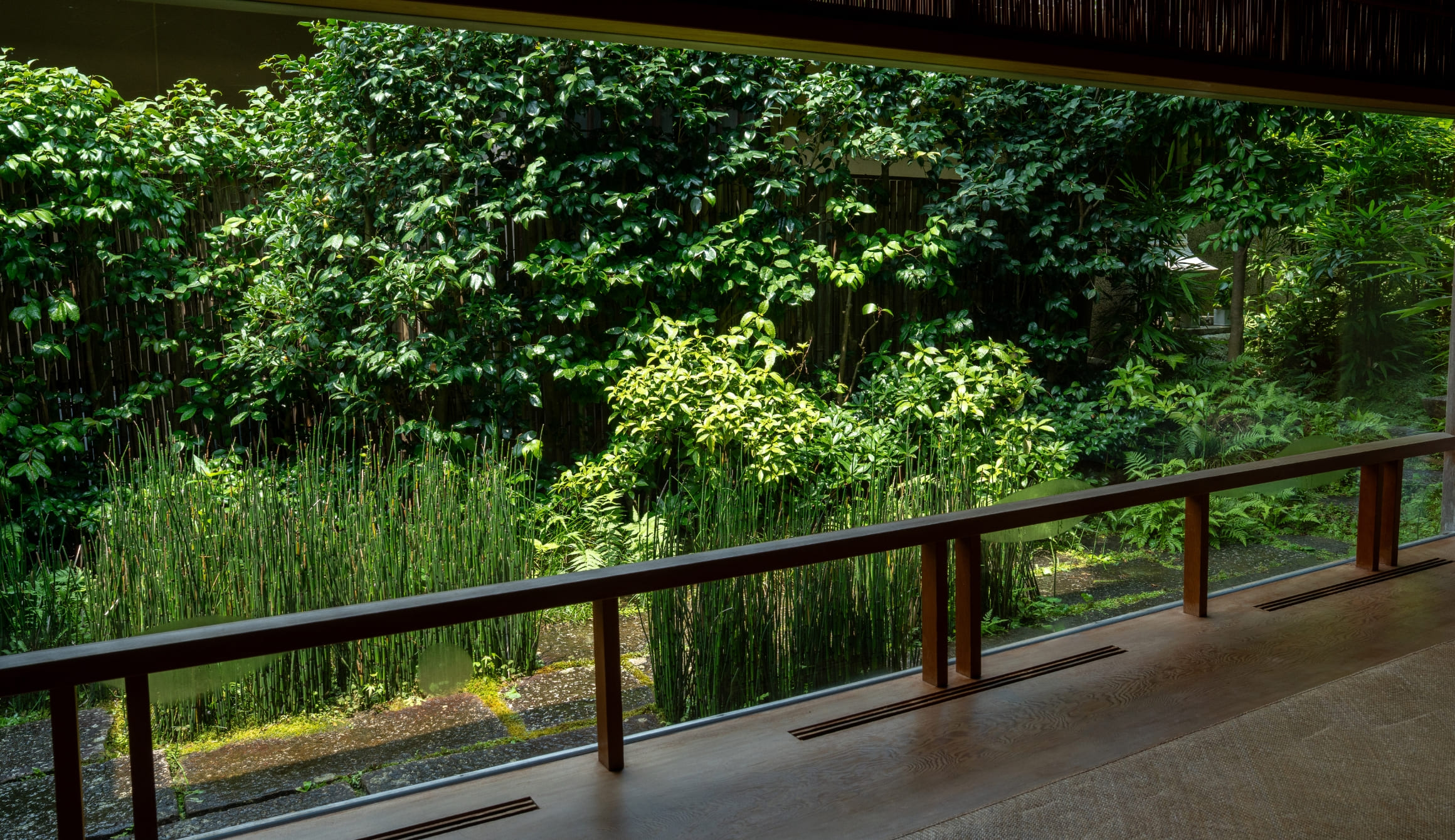
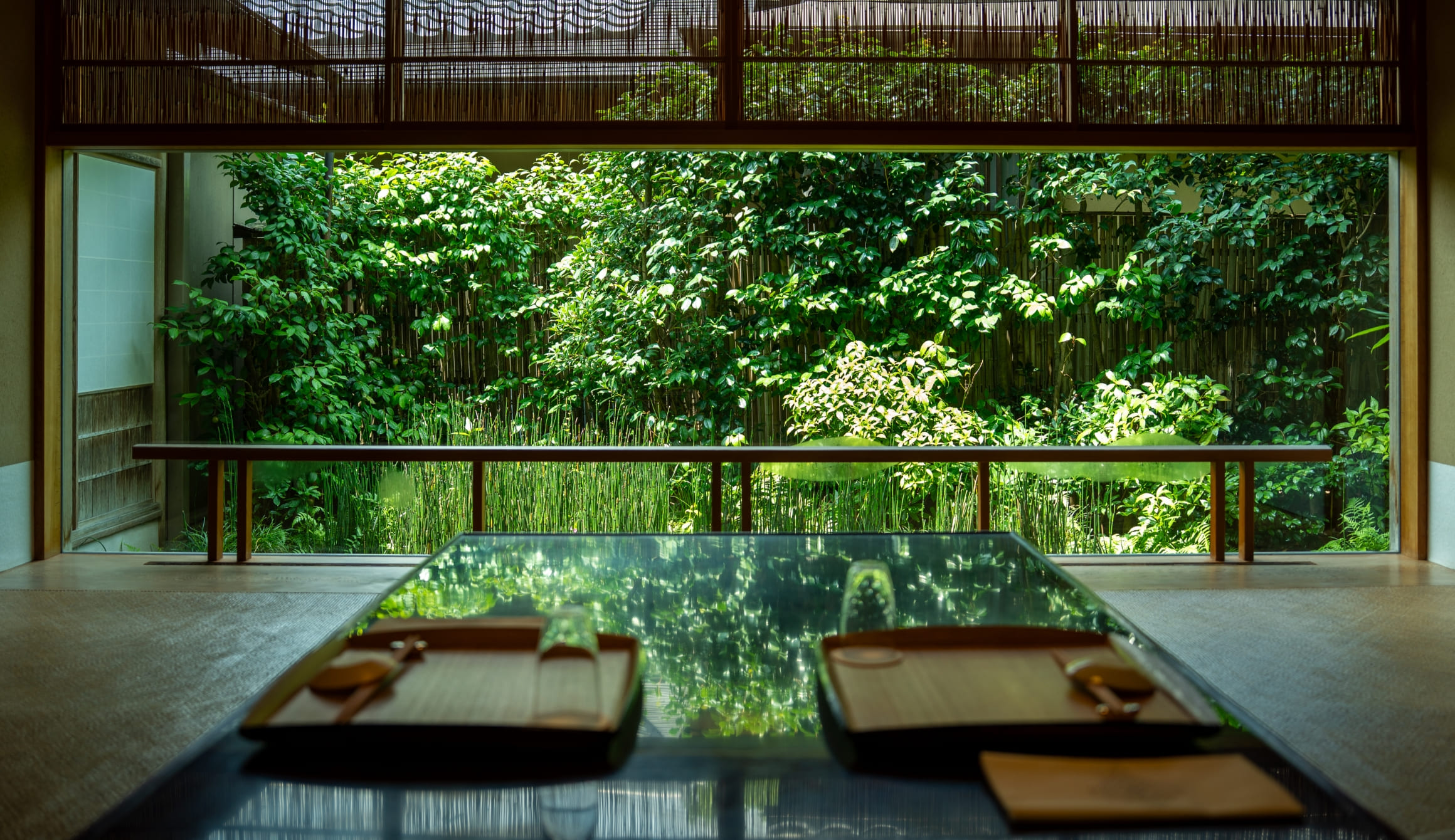
Details
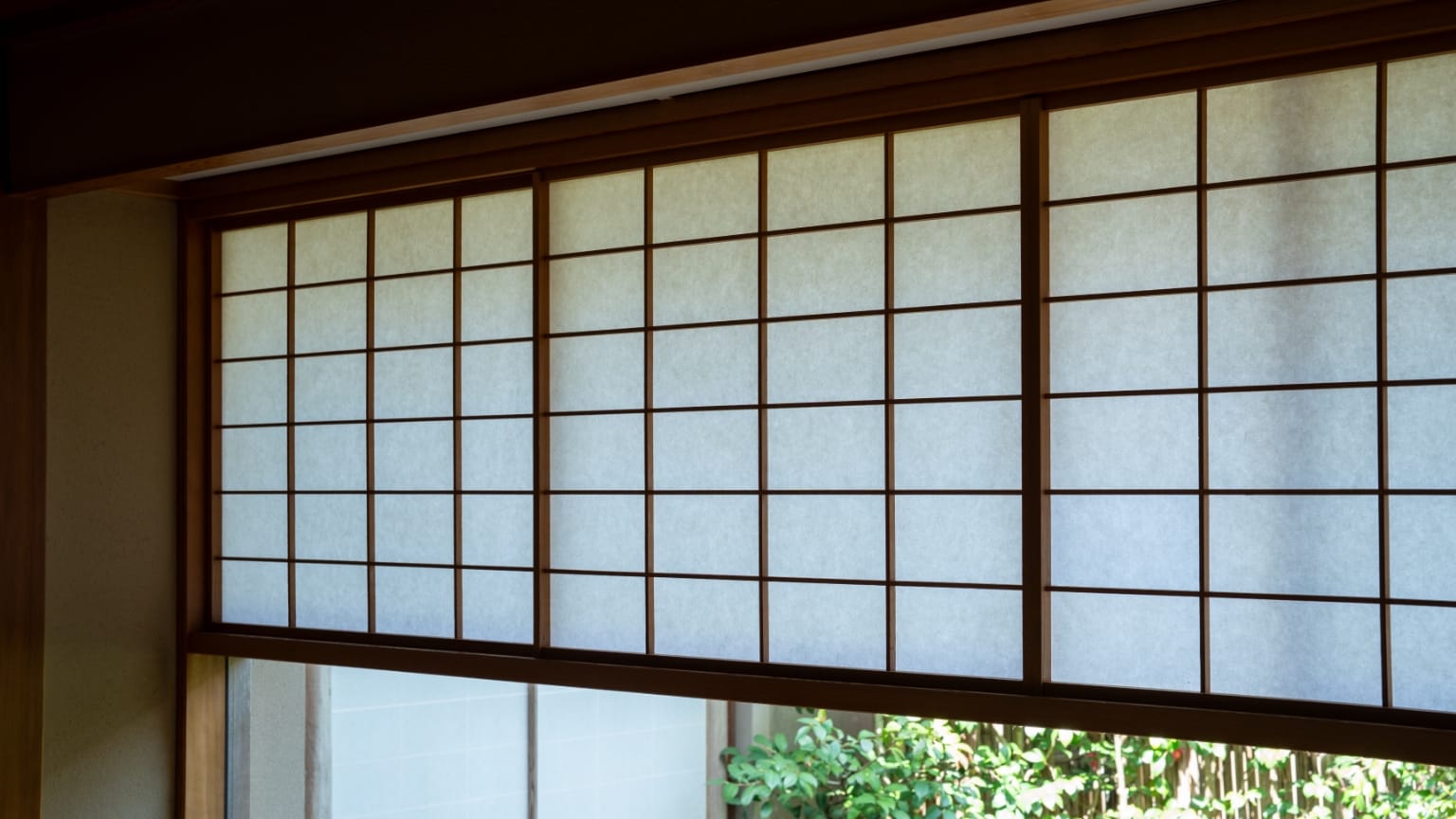
簡潔な美。雪見障子ならぬ花見障子として、四季折々の庭景色を引き立てます。
The beauty of simplicity. A more befitting name than yukimi-shōji would be hanami-shōji (flower-viewing screens), as they enhance the garden scenery throughout the four seasons.
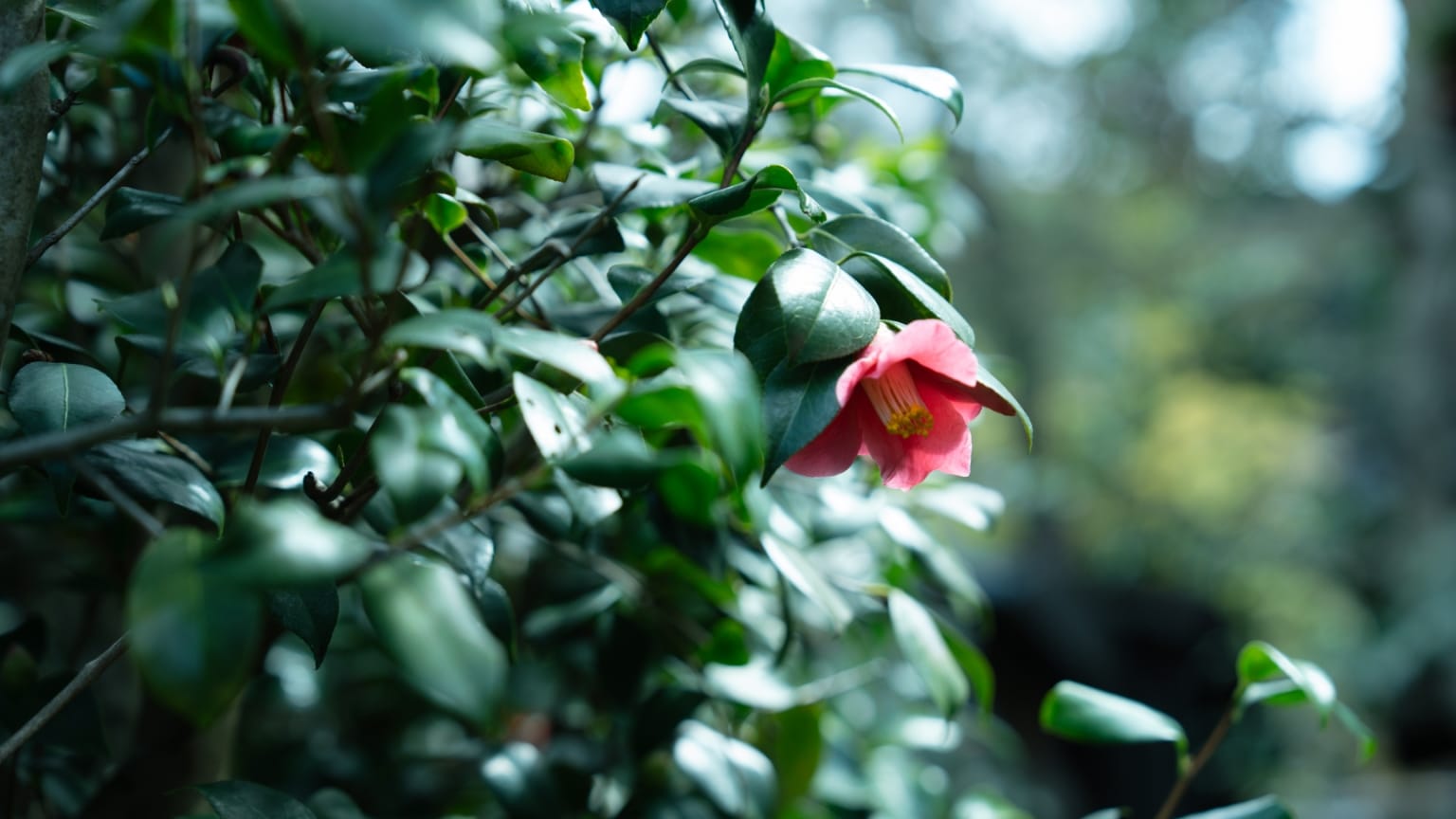
椿の生垣。艶々と濃い緑の葉が美しく、例年12月~3月頃にかけて花を咲かせます。
A hedge of camellias. The gloss of their deep green leaves is beautiful to behold; guests can enjoy their blossoms from December to March every year.
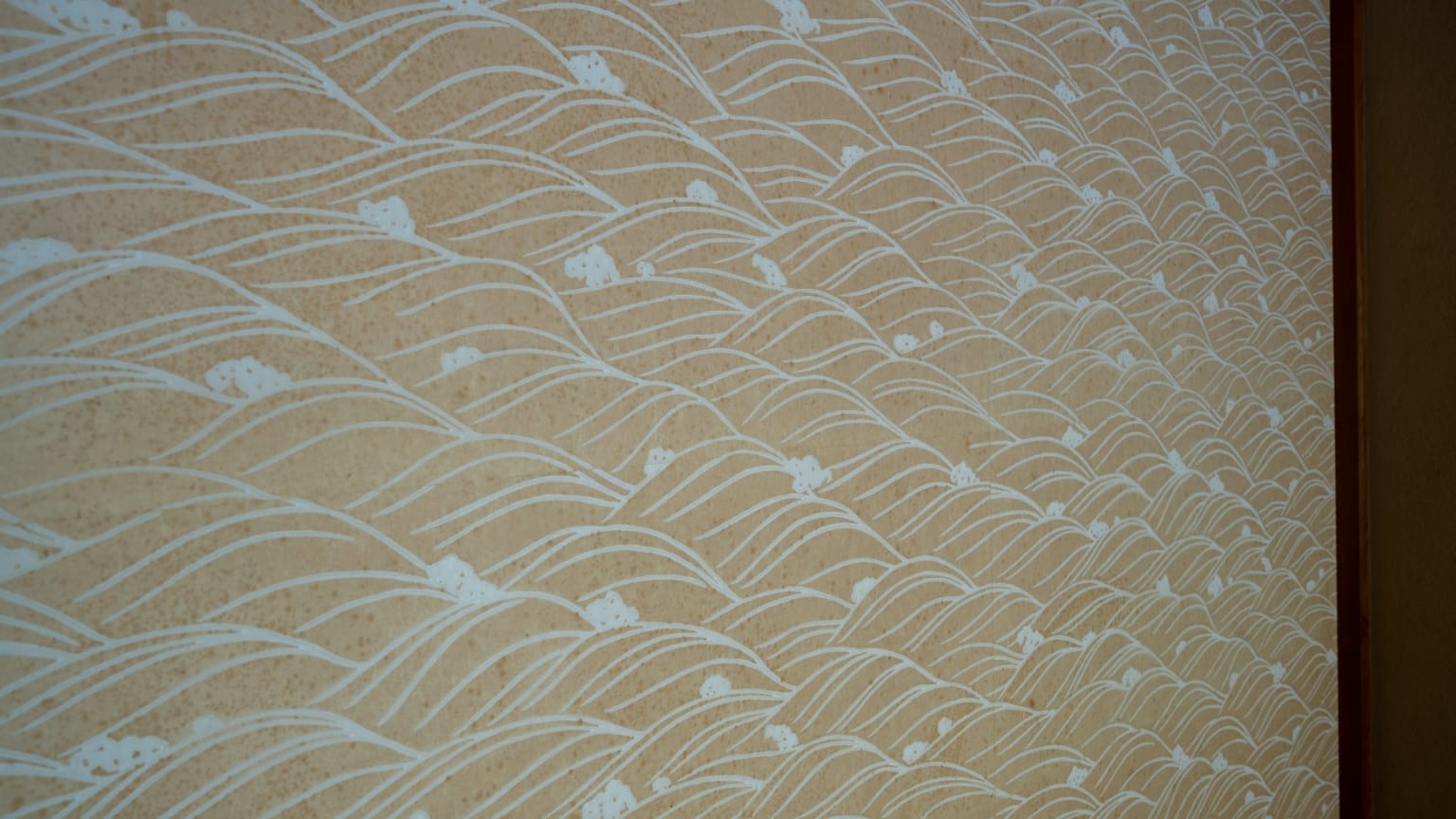
黄金色の実りを永劫に続く波ととらえた吉祥文様。雲母を用いた上品な光沢の京唐紙です。
An auspicious pattern depicting the endless waves of the golden harvest. The elegant luster on this Kyoto-style Japanese paper is created using mica.
